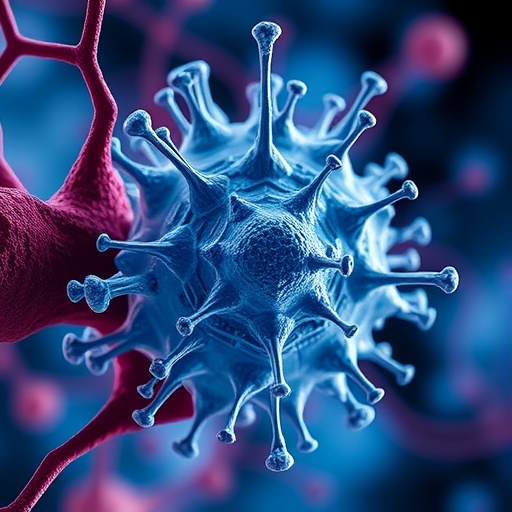In recent years, the field of mechanobiology has gained significant attention due to its crucial role in myriad physiological processes. Cells are not mere passive entities; they actively sense mechanical forces from their environment, a process known as mechanotransduction. This sensory ability allows them to transduce mechanical stimuli into biochemical signals that regulate essential cellular functions. For instance, the mechanisms of mechanotransduction play vital roles in development, tissue repair, and the functioning of the immune system. Additionally, dysregulation of these processes has been linked to various ailments, including cancer and cardiovascular diseases, highlighting their significance in both health and disease.
Original, endogenous mechanotransduction mechanisms operate through intricate molecular pathways involving specialized proteins that can sense mechanical cues such as tension or shear stress. These mechanosensitive proteins are embedded within the cell membrane and can activate intracellular signaling cascades in response to external forces. When these proteins detect changes in mechanical load, they can induce conformational changes that trigger a cascade of biochemical reactions, leading to alterations in gene expression and cellular behavior. This intricate dance between mechanical and biochemical signals exemplifies the advanced communication systems present in biological entities.
Recent advancements in synthetic biology have opened new avenues for engineering artificial mechanotransduction systems. By drawing inspiration from natural systems, researchers have begun to construct synthetic architectures that can mimic or even enhance the inherent mechanosensitivity of cells. These synthetic systems can introduce new functionalities, providing researchers with unparalleled control over cellular responses to mechanical stimuli. Importantly, such engineered systems could serve critical roles in therapeutic applications, where fine-tuning cellular behavior could change the landscape of disease management.
At its core, synthetic mechanotransduction can be seen in systems that express synthetic genes that respond to natural mechanosensitive proteins. This rudimentary approach allows for a broader range of manipulation in cellular behavior by designing genes that can be activated or repressed in response to specific mechanical cues. For instance, the incorporation of synthetic promoters can lead to gene expression changes that align with desired therapeutic outcomes. As research progresses, more complex approaches have emerged, incorporating entirely synthetic mechanosensitive proteins that offer enhanced sensitivity and specificity to mechanical forces.
Moreover, synthetic mechanotransduction isn’t limited to gene expression alone; it encompasses systems that control force generation itself. By engineering cells to exert forces on their surroundings, scientists can modulate tissue architecture, thereby impacting the overall functionality of the tissue. This ability to influence tissue shape provides a powerful tool for tissue engineering and regenerative medicine, potentially leading to innovative treatments for conditions previously deemed reparative challenges.
One fascinating aspect of synthetic mechanotransduction is the potential to revert malignant phenotypes in cancer cells. By engineering cells to respond to specific mechanical forces associated with their microenvironment, it may be possible to re-program malignant cells, encouraging them to adopt a more benign phenotype. This could lead to groundbreaking therapies that not only target the tumor cells directly but also modify the interactions they have with surrounding tissues.
In the realm of immunotherapy, synthetic mechanotransduction systems could provide a mechanism to enhance the efficacy of immune responses. By equipping immune cells with the ability to respond to mechanical stimuli that they encounter within tumors or diseased tissues, researchers could boost the activation and persistence of these cells where they are needed most. This application exemplifies how engineering cellular responses through synthetic biology may offer a new strategy for overcoming the limitations faced by current immunotherapeutic approaches.
As we explore the design of synthetic mechanotransduction systems, several considerations come to the forefront. These include the choice of biological components, the scale of response, and the specificity of the cues being detected. Carefully selecting natural and synthetic elements that work harmoniously is essential for creating effective systems. Additionally, optimizing the kinetics of reactions within these synthetic systems can bolster their effectiveness, allowing for desired cellular outcomes in a timely manner.
Identifying potential challenges is equally critical in pushing the boundaries of synthetic mechanotransduction. The complexity of the cellular environment poses significant obstacles, as cells must navigate a world of competing mechanical signals. Thus, ensuring robustness and specificity in synthetic systems is a paramount concern. Moreover, the potential for unintended consequences due to interactions with existing cellular machinery would require comprehensive testing and validation before clinical applications can be realized.
Despite these hurdles, the future of synthetic mechanotransduction is promising. Ongoing research is anticipated to unveil innovative strategies that can further enhance our understanding of how mechanical forces govern cellular behavior. As scientists continue to explore the intersection between engineering and biology, the prospect of tailored therapies that target specific pathways holds immense potential. With advancements in our ability to fabricate and control synthetic systems, the implications for diagnostics, therapeutics, and even preventive measures are vast.
In summary, the nascent field of synthetic mechanotransduction stands at the forefront of modern biology and medicine. By leveraging the principles of mechanotransduction and synthesizing new components, researchers are pioneering innovative approaches that aim to transform our ability to investigate and manipulate cellular behavior. The potential applications of synthetic mechanotransduction promise to revitalize our current understanding of health and disease, paving the way for holistic solutions that could redefine therapeutic paradigms. It is an exciting time to witness the growth in this arena, as the interplay between mechanobiology and synthetic biology progressively reveals new horizons.
Subject of Research: Synthetic Mechanotransduction Systems
Article Title: Synthetic Mechanotransduction: Engineering Cellular Responses to Mechanical Forces
Article References: González-Martín, M., Martínez-Ara, G., Ngo, J.T. et al. Synthetic mechanotransduction. Nat Rev Bioeng (2025). https://doi.org/10.1038/s44222-025-00366-7
Image Credits: AI Generated
DOI: 10.1038/s44222-025-00366-7
Keywords: Mechanotransduction, Synthetic Biology, Cancer Therapy, Immunotherapy, Tissue Engineering, Cellular Engineering, Biological Systems, Mechanical Forces.




